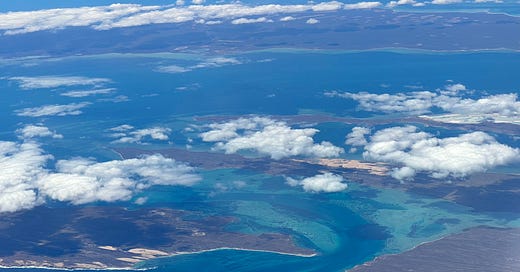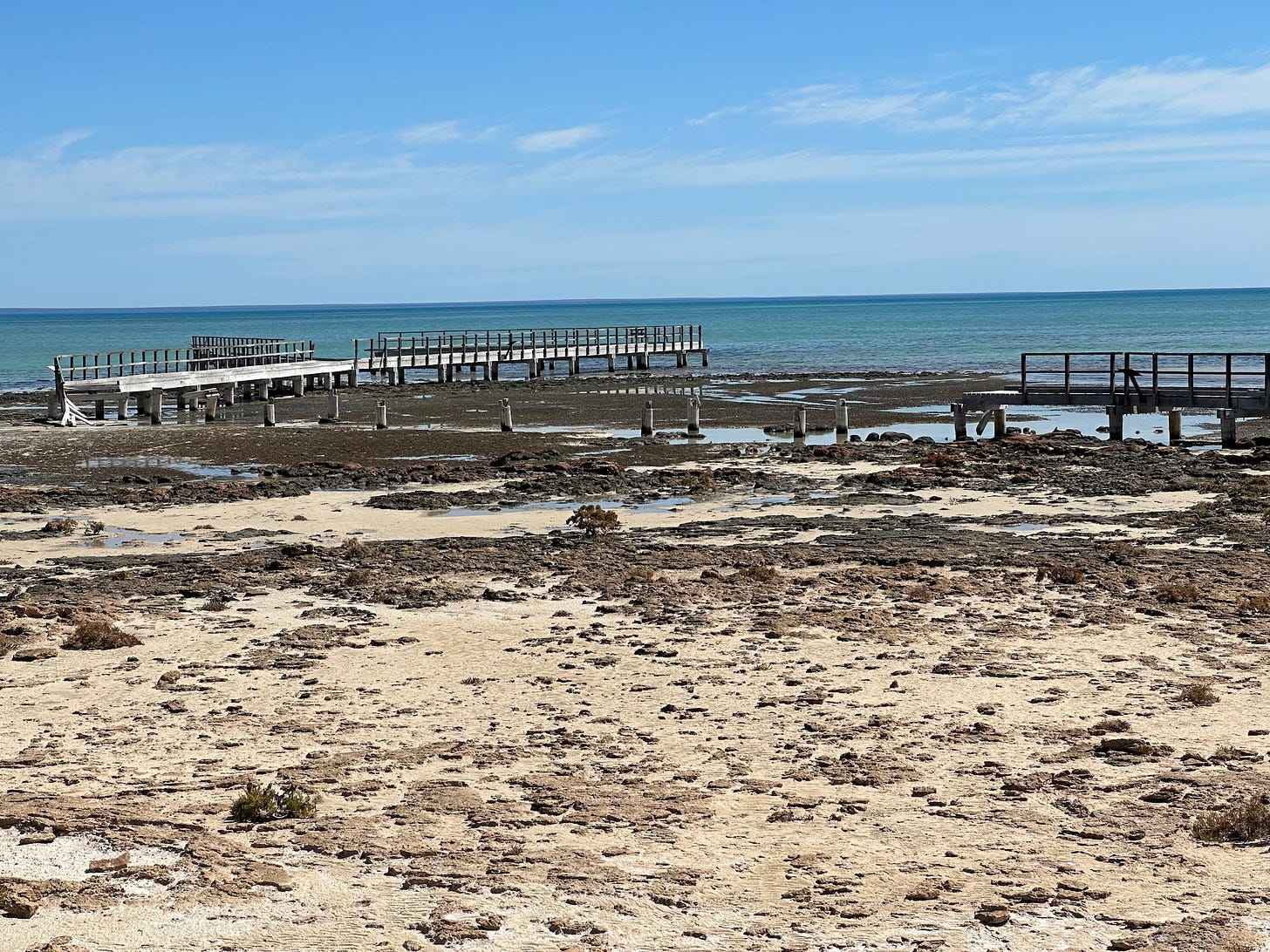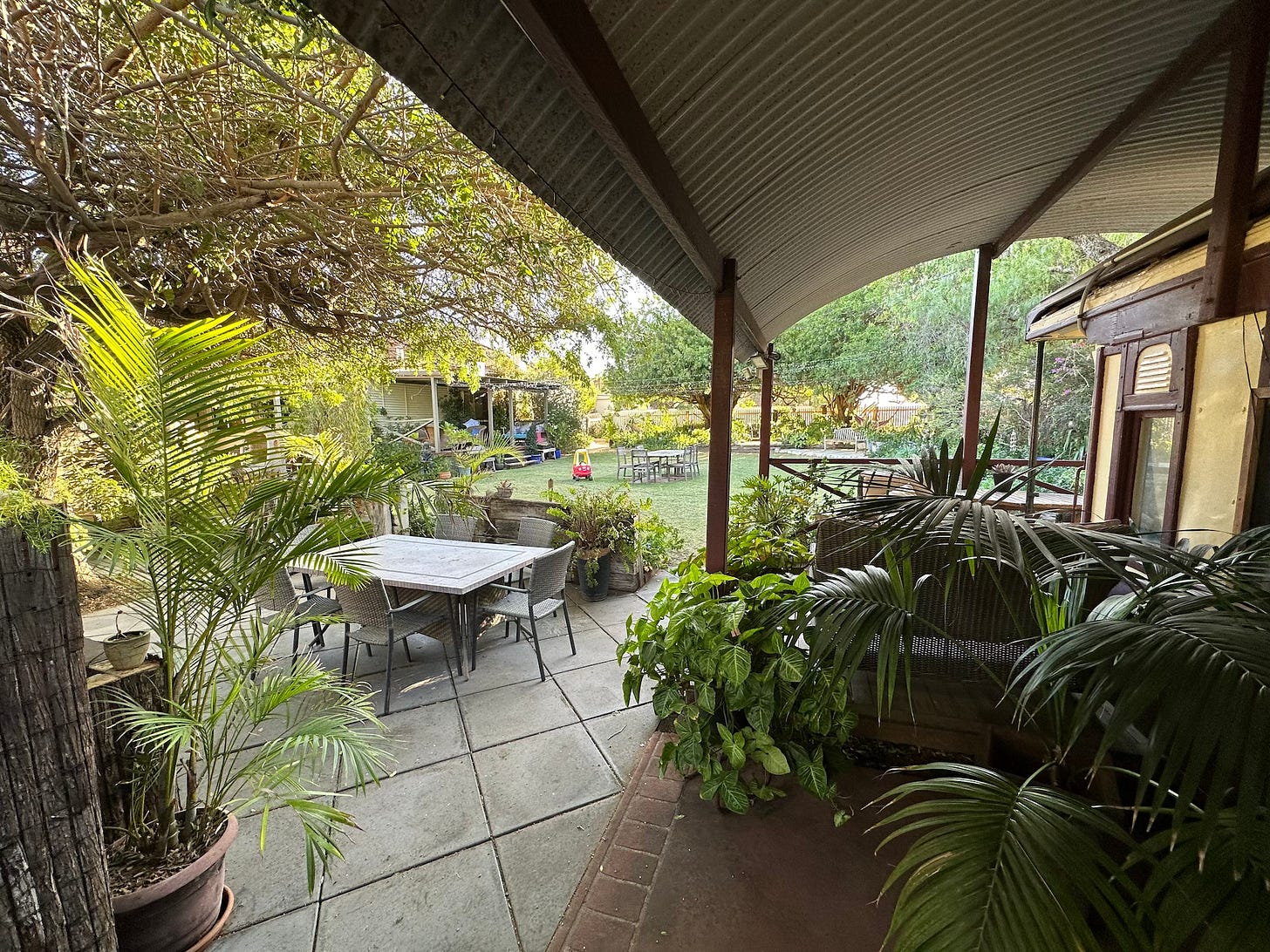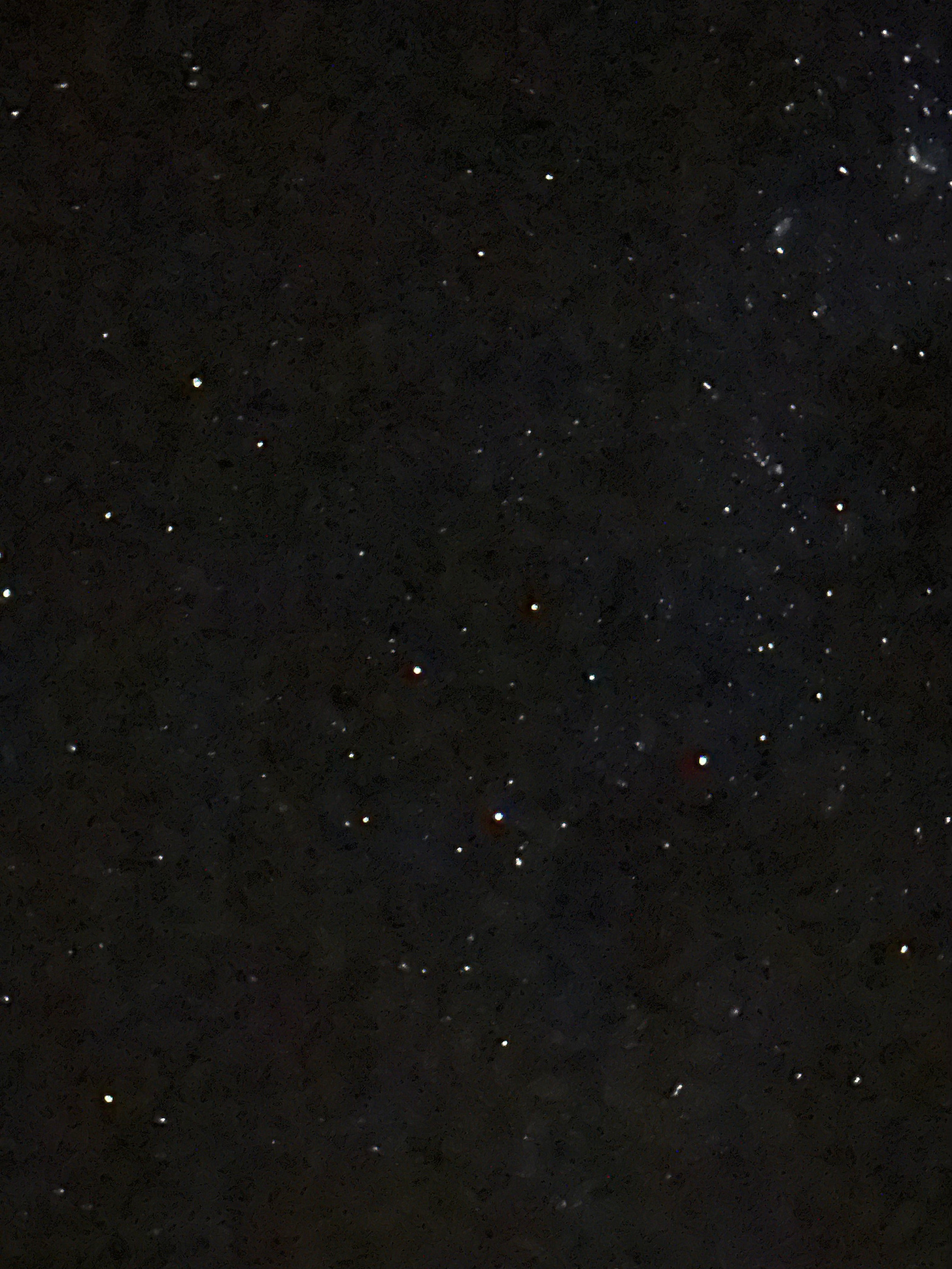People often underestimate how many people attend a total solar eclipse. Of course, the usual suspects; that is, the solar eclipse fanatic followers and enthusiasts will be there. But the most people attending are the locals. And sometimes the timing helps. In this case, the Thursday April 20 eclipse fell in the second week of the Western Australian Easter holidays, so many people from Perth took this opportunity to drive north and combine the eclipse watching with a holiday in the Gascoigne region.
It was estimated that about 50,000 people were in Exmouth during the eclipse, while Exmouth has an official population of 2,800. Every campsite and hotel was fully booked. Nevertheless, it was still possible to get food in restaurants and beer in the two local breweries. While these were very well attended, they didn’t turn people away. I suspect the utmost majority got their food in the local supermarkets and prepared it on the campsites.
It also meant, that after the Thursday eclipse people effectively had three days to get back to Perth (yes, some people came in by airplane, but these were only a few hundred), a drive of some 1,250 kilometres. So, as I left Exmouth after the total solar eclipse, I drove to Carnarvon. It was the same story there, a day after the eclipse: hotels and campsites completely occupied, and it was strongly recommended to book ahead in the restaurants. I tried, but was told that “Sorry, we’re fully booked, mate.” So I took it easy, microwaved a chicken satay dish from the local supermarket and flushed it down with a sixpack of Little Creatures Pale Ale. I’d had some extremely busy days before, after all.
The next day I wanted to visit the Space and Science Centre in Carnarvon, but at 09.30 in the morning—it opens at nine A.M.—the parking spot was already totally full. Oh well, I decided to get on the way to Denham right away, stopping at Hamelin Pool, where one can watch a colony of stromatolites. Stromatolites are the extremely far descendants of [original stromatolite bacteria] that began producing Oxygen, thereby being instrumental in the ongoing development and complexity of life.
Unfortunately, cyclone Seroja had struck nearby in April 2021, and the boardwalks from which one can watch the stromatolite colonies were partly destroyed, and hadn’t been repaired yet. So they were still closed off and inaccessible to the public. I’d visited this site back in 1999, when one could walk these boardwalks. However, at that time I did not have a smartphone with a good camera (no phone nor camera at all), so I only have my memories, no pictures. The shot above shows how close I was allowed to come (not very).
As such, I arrived a bit too early at my appartment in Denham (normally check-in opens at 14.00, and I was there a quarter past one), but the owner was already there and immediately handed me my keys. Great service! Then off for a coffee, and then to Monkey Mia.
Monkey Mia didn’t have a resort, back in 1999. Come to think of it, that’s what I think has been happening in Australia over the past, say, 25 years (and not only in Australia): resortification.
Spoiler alert: in 2028, I hope to attend the July 22 total solar eclipse at Purnululu, which in 1999 was only accessible after a trying one-and-a-half hour 4WD trip. You had to bring your own food and drinks, and were supposed to clean up after yourself. Which made it adventurous. Now I understand there are at least two resorts at Purnululu, one an eco-resort for the sustainable hipster and a luxury resort for the very rich, where one can be flown in by helicopter.
Standing in between, or swimming with dolphins in Monkey Mia was a lovely experience, back in 1999. If my memory’s correct, it happened at the small wooden pier, as the concrete pier, and the whole resort around it, didn’t exist at that time. Back then, you could stand or swim close to them—the dolphins would get quite near—and there were less than a dozen people attending this, as it was a 4WD drive through the middle of nowhere. And it cost nothing (apart from the travel costs, obviously).
Now, the road to Denham and Monkey Mia is sealed, and you have to pay an entrance fee (AU$15 per adult/car) to even be allowed into the Monkey Mia resort (the fee’s probably waived if you’ve booked accommodation, I suspect, but didn’t check). Dolphin feedings are only in the morning hours, in three sessions, and hundreds of people attend each session. And people need to keep at least 50 metres distance (and sometimes even one hundred metres). It’s better for the dolphins, especially since visitor numbers have exploded, but has also taken away the charm of my original experience.
[Video of a turtle @ Monkey Mia, shot by my iPhone.]
Since I arrived at 15.00 hrs, there were no dolphins at the new Monkey Mia pier. That didn’t bother me, as I’d seen I’d seen plenty of dolphins at both snorkelling trips in Coral Bay and Exmouth. Instead, there was this lovely little turtle (see picture/video) and two emus foraging at the car park when I tried to get into my rental car (see other picture/video). You lose some, win some.
I have mixed feelings about the ‘resortification’ of iconic and—until recently—very remote Australian sights, and I think the way the WA goverment tried to control the experience around the eclipse at Exmouth falls under the same type of control. As this is about both control and monetisation.
I do understand that highly irritating and irresponsible people would have camped illegally at Cape Range National Park and have polluted the place. Another example of a small minority screwing it up for a large, responsible majority. On the other hand, I get the feeling that eclipse events are increasingly seen as big chances at monetisation as prices for accomodation, tours and ‘special events’—such as a three-course eclipse brunch with matched wines for AU$200—become both ridiculous and, unfortunately, quite common.
I did book as far in advance as I possibly could, and then one booking fell through because the property was sold, a few months before the total solar eclipse. At that point, it’s virtually impossible to find affordable accomodation (for example, there was a 3-bedroom house for rent in Exmouth for a measly €2,200—yes, that’s euros not Aussie dollars—per night which I declined). That was for the nights from April 20 to April 22. For the April 21/22 night I was able to find a hut at a campsite in Carnarvon (see above), but for a long time my night from April 20/21 was unbooked.
Eventually, I was able to book an extra night at the Ningaloo Resort where my sister and I were staying from April 16 to April 19 (for AU$200/night), but at the double rate of AU$400/night. It was either that or sleep in the car (which might have been illegal).
Of course, one could rent a camper or RV—much more expensive than a normal car—and then save money by staying at campsites. Or one could just rent a normal car, buy a tent and stay at campsites—which we did back in 1999, when I was much younger. Keep in mind that daytime temperatures in Western Australia are normally in the 30s Celsius in April, sometimes exceeding 40 Celsius, while the nighttime temperatures rarely drop below 20 Celsius (and are often above 24 Celsius). Not a nice temperature for Northern Europeans to sleep. And Australia isn’t cheap to begin with, including the supermarket prices while the variety of food and other stuff on offer is rather limited in the outback. In other words: you pay more money for a much more limited choice. Typical example: a German gone Aussie native tour guide said she’d be visiting the food trucks at the Exmouth eclipse festival because they’d be bringing something else than the limited choice offered by the local restaurants (less than ten IIRC) and small supermarkets.
In the meantime, due to, I suspect, much word-of-mouth and social media, total solar eclipses have become more popular (maybe part of everybody’s bucket list), so more and more people are trying to see one. On the other hand, Exmouth may have been an extreme example as this eclipse was only visible in Australia in Exmouth and Barrow Island—the latter having extremely limited access—and in East Timor and West Papua/New Guinea.
The July 22, 2028 total solar eclipse will cross over the whole Australian continent—from the north of Western Australia via the Northern Territory, Queensland, a small part of Southern Australia and New South Wales (and the southern island of New Zealand), meaning there will be much more space for people—and the fanatical solar eclipse chasers in particular—to select their perfect spot for watching it. Yet there will be resorts in some of the remotest of places.
It also goes straight over Sydney, but I’d recommend against seeing it there, as accommodation prices will go through the roof (only go there if you can stay with family or friends). Anyway, five years to mull this over (at least for me), but there will be three other total solar eclipse to take care of before that. I expect that the 2026 and 2027 ones that both cross Spain will be the relatively easiest ones.
In any case, while Monkey Mia was a disappointment, Denham was alright. The apartment I had at Wildsight Villages was very good, the atmosphere in the village was relaxed and as the Old Pearler restaurant was fully booked, I made do with pizza and beer (life is hard…;-).
Then it was onwards to Dongara. I decided to skip Geraldton because all I could remember from when we stayed there in 1999, is that is was boring. Calling it boring, however, would be giving Dongara a compliment. It’s a small village along Highway 1 where nothing much happens.
The Dongara Breeze Inn calls itself rustic, and rustic it was indeed. While I wouldn’t want to stay here for long, it was alright to be in a place where it’s not stupidly busy. And maybe it was a kind of poetic justice to be in a very rustic place on Earth Day 2023, who knows. At this point, near the end of the holiday, the accumulated tiredness of a hectic schedule throughout was catching up with me, so a slow day without any sight-seeing was quite alright with me. In league with that, the village of Dongara has a lot of big trees that throw cooling shades during the heat of the day (it was still 32° Celsius).
Dinner at the local pub which was, as far as I could see, visited mostly by locals. While Carnarvon and Denham were still seeing the retreating waves of solar eclipse watchers—and were subsequently fully booked—Dongara was spared this tourist tsunami. It was still pretty busy at the local pub, however it was also a Saturday night. And despite it being busy, service was quick and the steak was quite good. At the walk back to the holiday park I did some stargazing as the light pollution was quite minimal. Dongara was quite alright for one day, and I’d recommend it above Geraldton.
Author’s note: welcome again to a new subscriber! The Travel Blog is almost done, so the essays will return. Some more musings on the impossible (which often inform my writing), benevolent developments around the world (that largely go unreported), and three essays about the Simulation Hypothesis (timing will depend on when I sell my short story that carries the reveal on that). Also, bonus material including some gig reviews (as music also informs my writing) and a massive timeline on a certain topic (to be revealed in time) that will need your help and constant updating.
Thanks for reading!
NB: all pics and video in this piece were shot by my iPhone.









